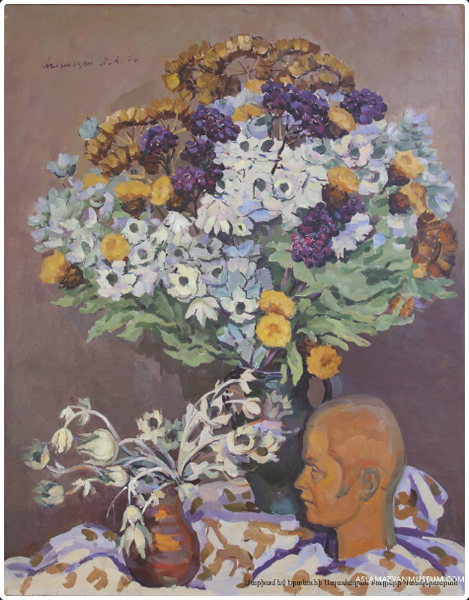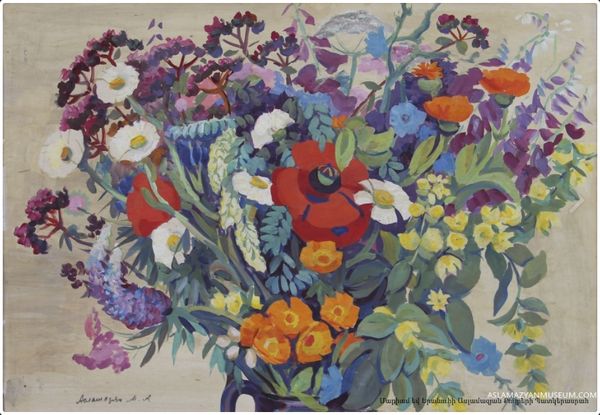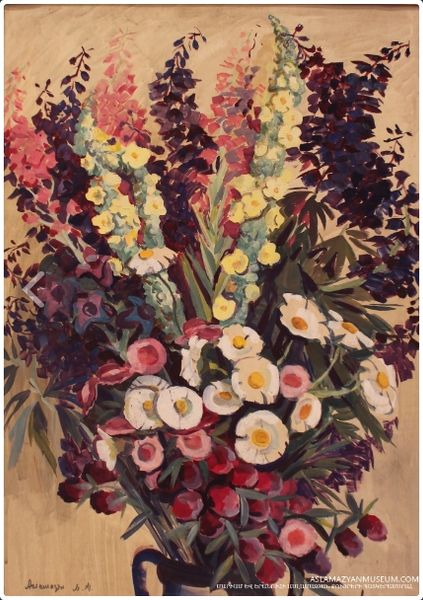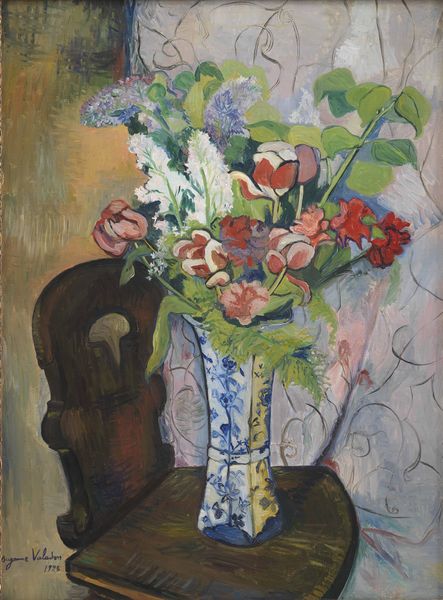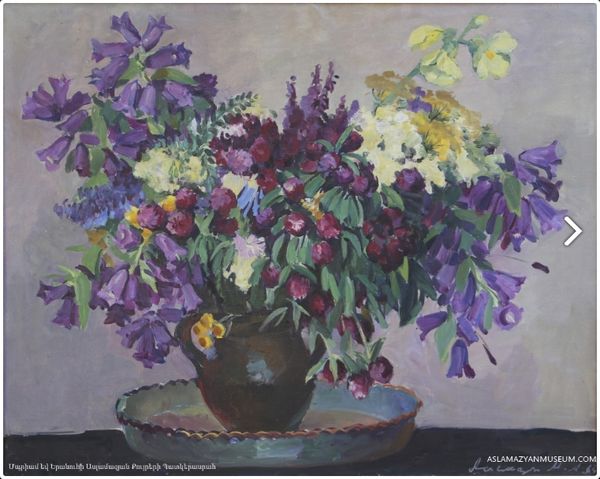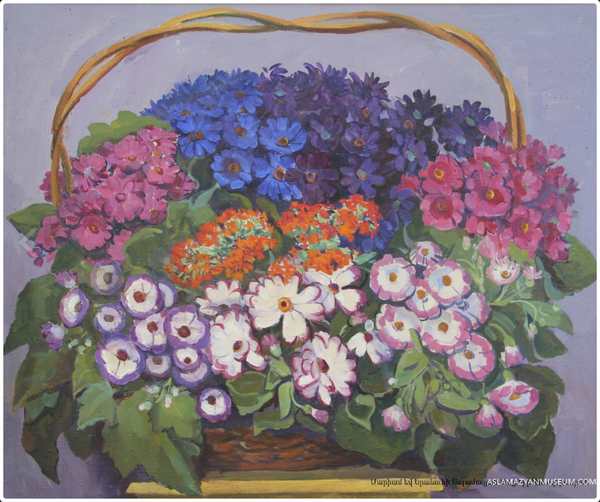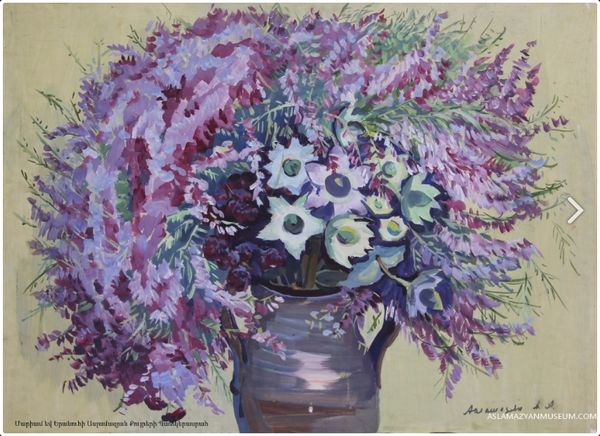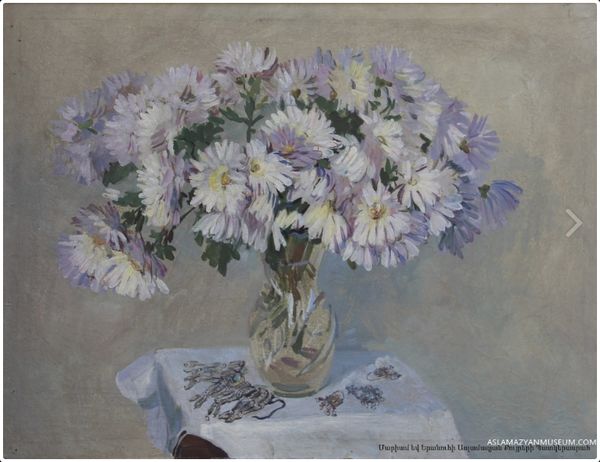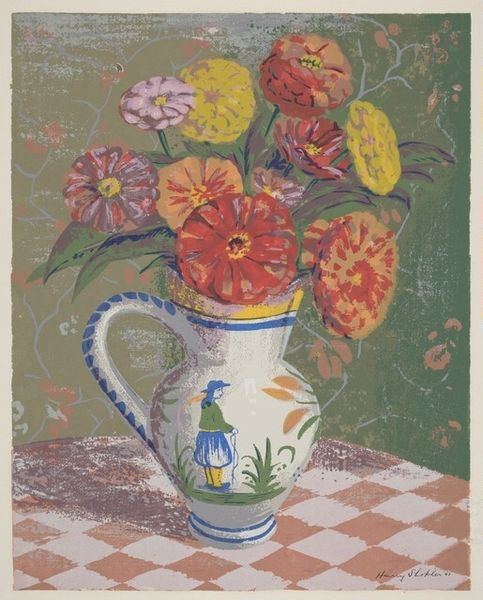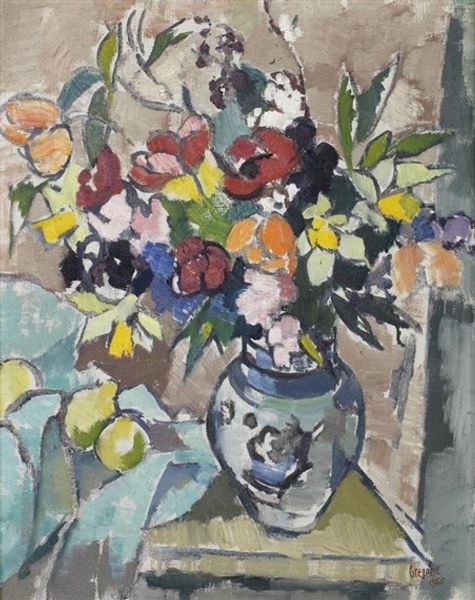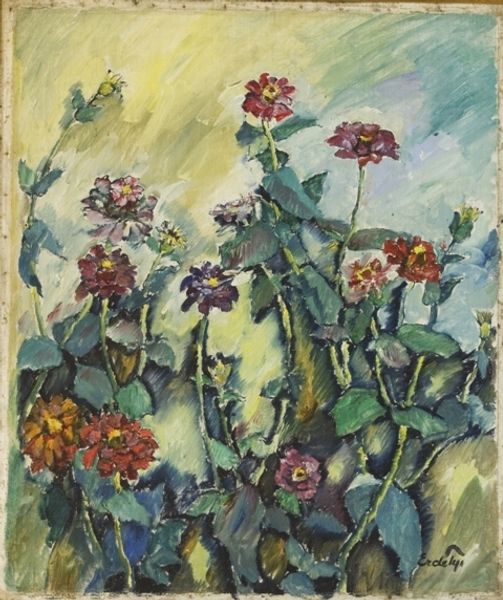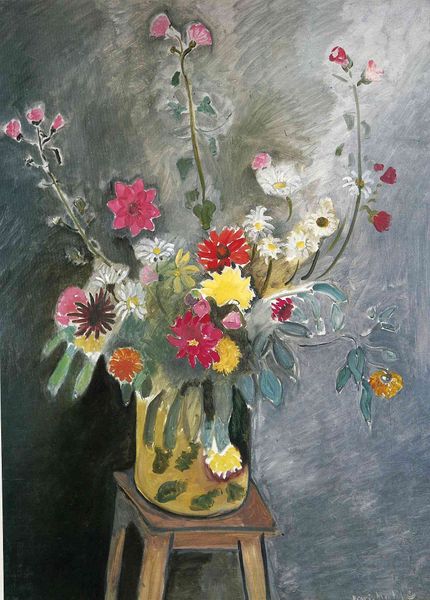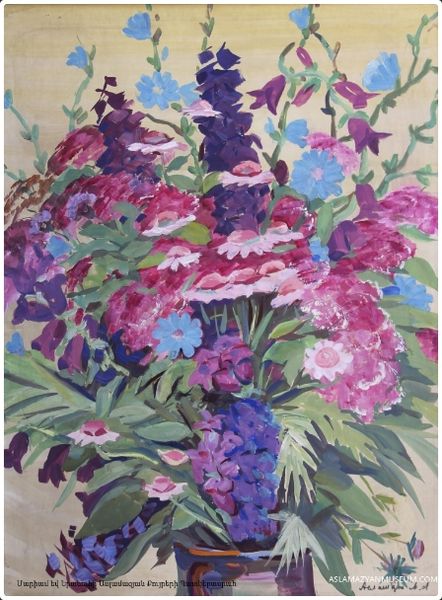
Dimensions: 92 x 76 cm
Copyright: Mariam Aslamazian,Fair Use
Editor: So, this is Mariam Aslamazian's "Mountain Flowers," painted in 1951 using oil on canvas. The riot of colors is immediately striking. It feels both exuberant and somehow a bit melancholic. What jumps out at you when you look at this piece? Curator: I am struck by the structural tension within the composition. Note how Aslamazian employs contrasting hues, positioning the vibrant floral arrangement against the somber, almost muddy background. This juxtaposition invites the viewer to dissect the formal qualities and material conditions that create meaning. Editor: It almost feels like the background is threatening to swallow the flowers! The impasto is so thick in places; what does that technique do to our perception? Curator: Indeed. The impasto lends a tangible, almost sculptural quality to the blooms. This bold application of paint foregrounds the materiality of the work. The artist is not merely depicting flowers; she is making us intensely aware of paint itself. The tactile nature emphasizes the artwork as object, drawing attention to the artificiality inherent in representation. Editor: I see what you mean. It's less about the "idea" of flowers and more about the physical presence of paint mimicking the real. Does the artist use that contrast somewhere else? Curator: Observe also the artist's deliberate distortion of perspective. While the vase sits stably, the surrounding background seems to undulate, flattening the space and unsettling the assumed depth of field. Can you identify another instance of that disruption? Editor: Well, the patterns in the fabric don’t quite line up in a realistic way… it adds to that feeling of unease. Thank you for pointing out details in that flattening! Curator: A pleasure. Considering the structural interplay between surface, texture, and form opens up further lines of enquiry into this ostensibly simple still life.
Comments
No comments
Be the first to comment and join the conversation on the ultimate creative platform.
